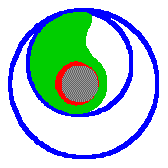Perpetuum mobile
Du får her en række udkast til Perpetuum Mobilis (evighedsmaskiner).
Forklaringer er udeladt - men der er ikke meget, der kan misforstås !
1. Pendul holdes igang af kugle
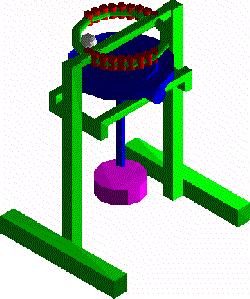
2. Fundet i magasinet "ZIVLJENJE IN TEHNIKA"
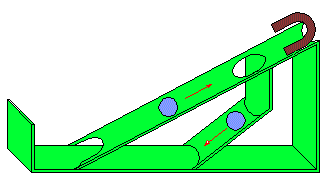
3. Newtons lov 1 ?
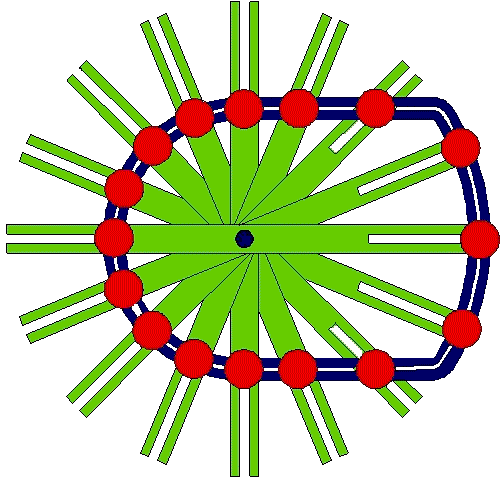
4. Newtons lov 2 ?
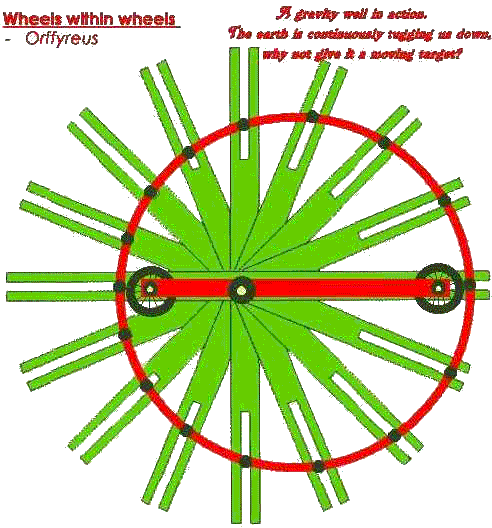
5. Lad magneterne gøre arbejdet.
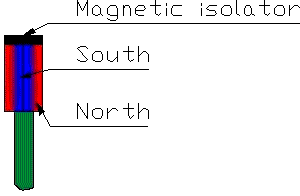
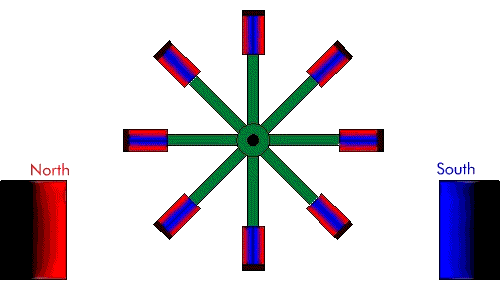
6. Vand i 2 cylindere.
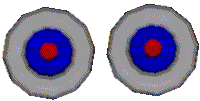
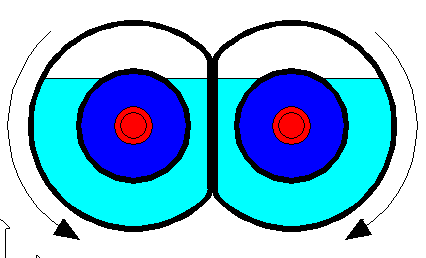
7. En lille forklaring er måske nødvendig her
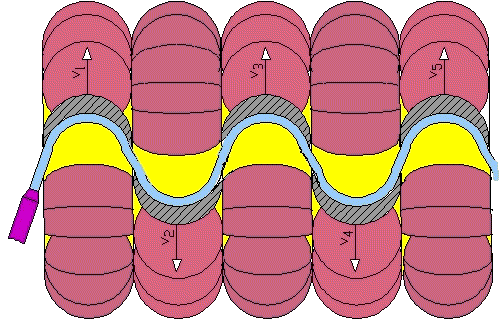
As you can see from the picture, there is a line of turbines and a wather jet flowing throgh them. Let's say that the water is flowing withouth any looses from a tank pozitioned 10m higher then the turbines. According to the mathematics and physics, from the powwer needed to pump the wather back into the tank., and the ideal power that we can get from the turbines is not the same. Let's assume that the magnitude of the flow is 10 liter per second (m=10 l/s). The speed of the injetion flow is u=14.00714104m/s. The power, needed to pump the wather back into the tank is P=F*v=m*v*v, that meanes that P=1.962 W. The jet flows into the first turbine. If we calculate the optimum tangential speed of the turbine, we find that it's magnitude is v1=u/3=4.669047013. The power we can get from the first turbine is P1=m/3*u^2=P/3=0.654. Then the jet enters the second tubine. The ideal work, that we can get from the second turbine is P2=m/3*(2/3*u)^2. Analog the work from turbine number n is Pn=m/3*(2/3*u)^(2*n). If the line of the turbines is very long then the whole amount of wor from all turbines is P=1.1772W. As you see the power from turbines is of less magnitude then the the power needed to pump the wather back into the tank. So if we rotate the turbines, we pump the wather in the rezervoar and actually benefit power.
6. Magnet trækker jerncylinder
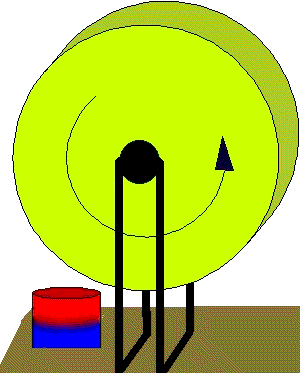
7. Kugler og magneter (samme princip som ovenfor)
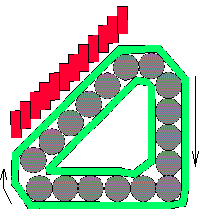
8. Russisk skitse af ? (måske udkast til nr. 3 og nr 4)
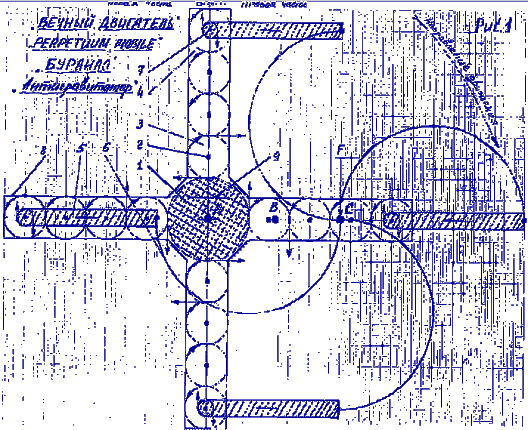
9. Kugler i hjul
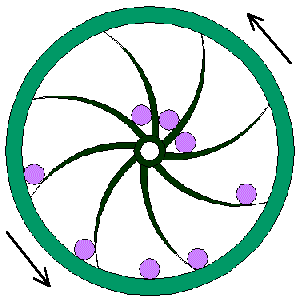
10. Solhjul
